Abstract
The arsenate poisoning of R17 phage eclipse in Escherichia coli cultures grown in glycerol-containing medium has been found to be mediated by a dramatic loss in cell-associated F pili. Poisoning was very rapid and was nearly complete within 3 min at 37 C. The loss of pili was reflected by a 90% reduction in the ability of these cells to attach ribonucleic acid phage and by a reduction in the pili-per-cell ratio from 1.36 to 0.04 as determined by electron microscopy. Neither the integrity of the pilus per se nor the attachment process was affected by arsenate, for cell-free pili treated with arsenate retained the ability to attach phage. The arsenate effect on F piliation could be reversed readily without any loss in cell viability. This restoration of pili occurred under conditions of inhibited protein synthesis, implying that pools of pili protein exist in cells. In contrast to this phenomenon, cells grown in glucose-containing media were mainly resistant to arsenate poisoning as determined by phage attachment and the number of pili per cell. These results implied that arsenate poisons the ability of cells to synthesize and maintain F pili under certain specific conditions. The possible mechanism of this poisoning is discussed.
Full text
PDF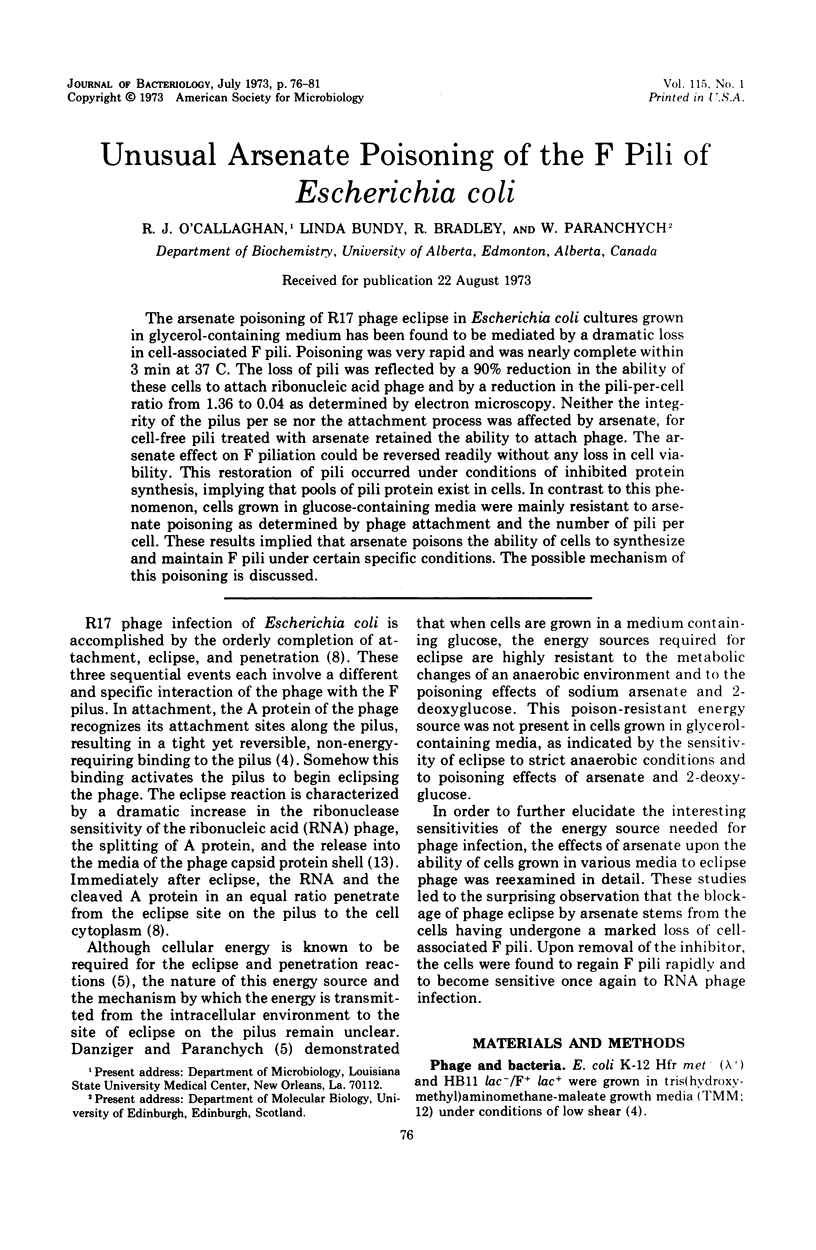
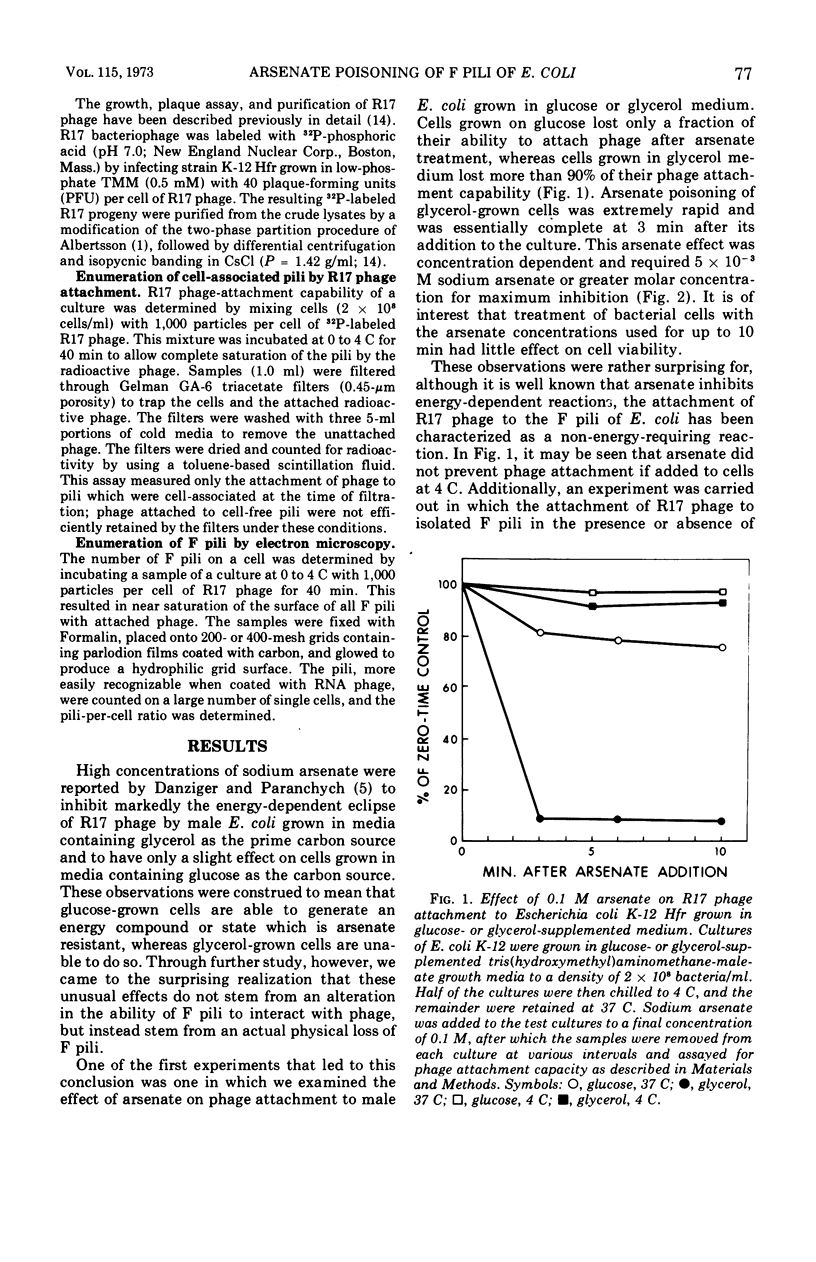
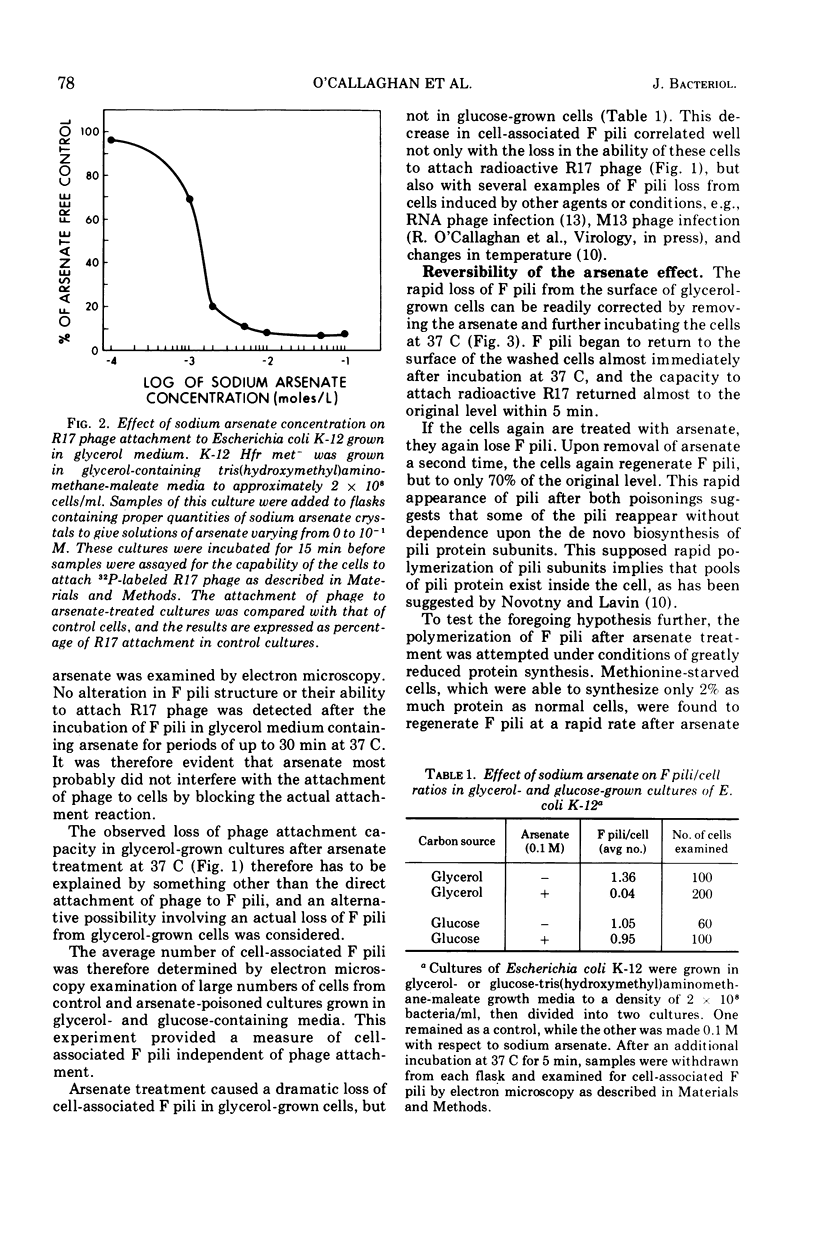
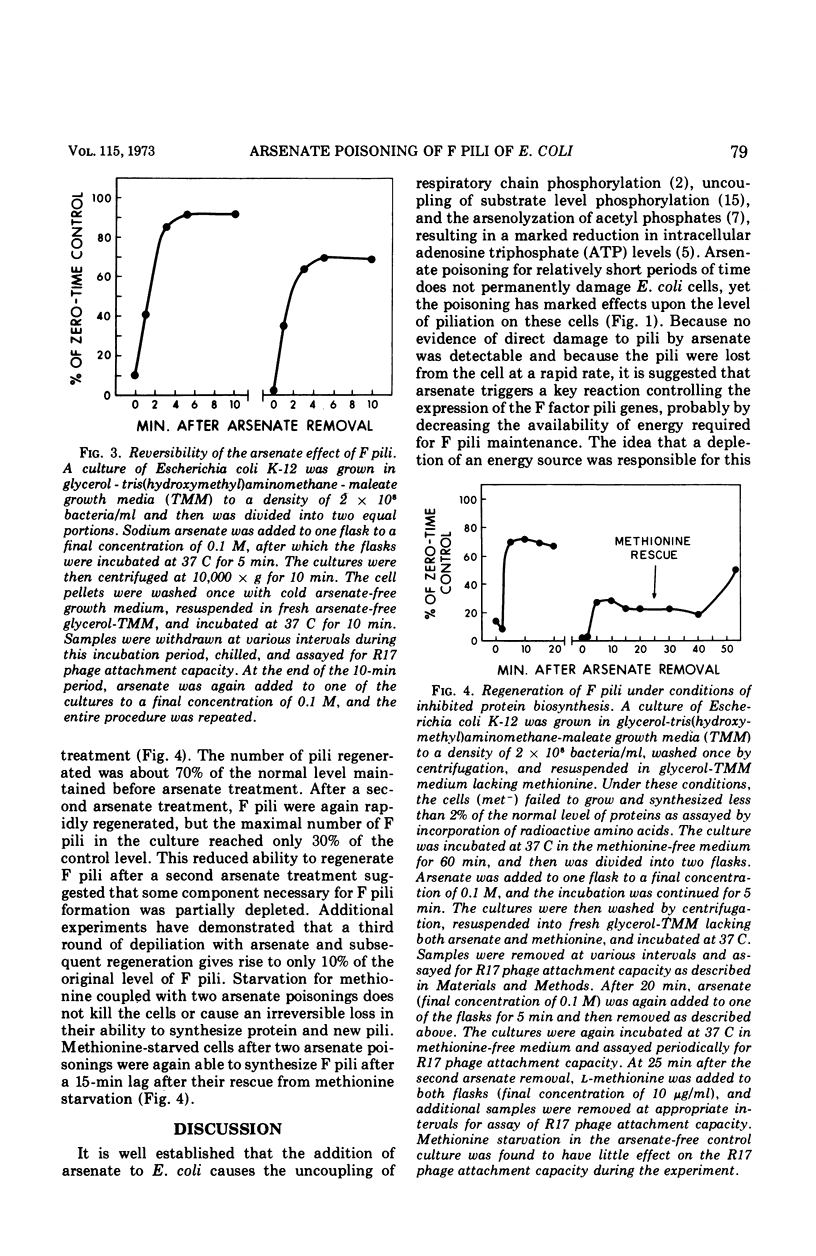
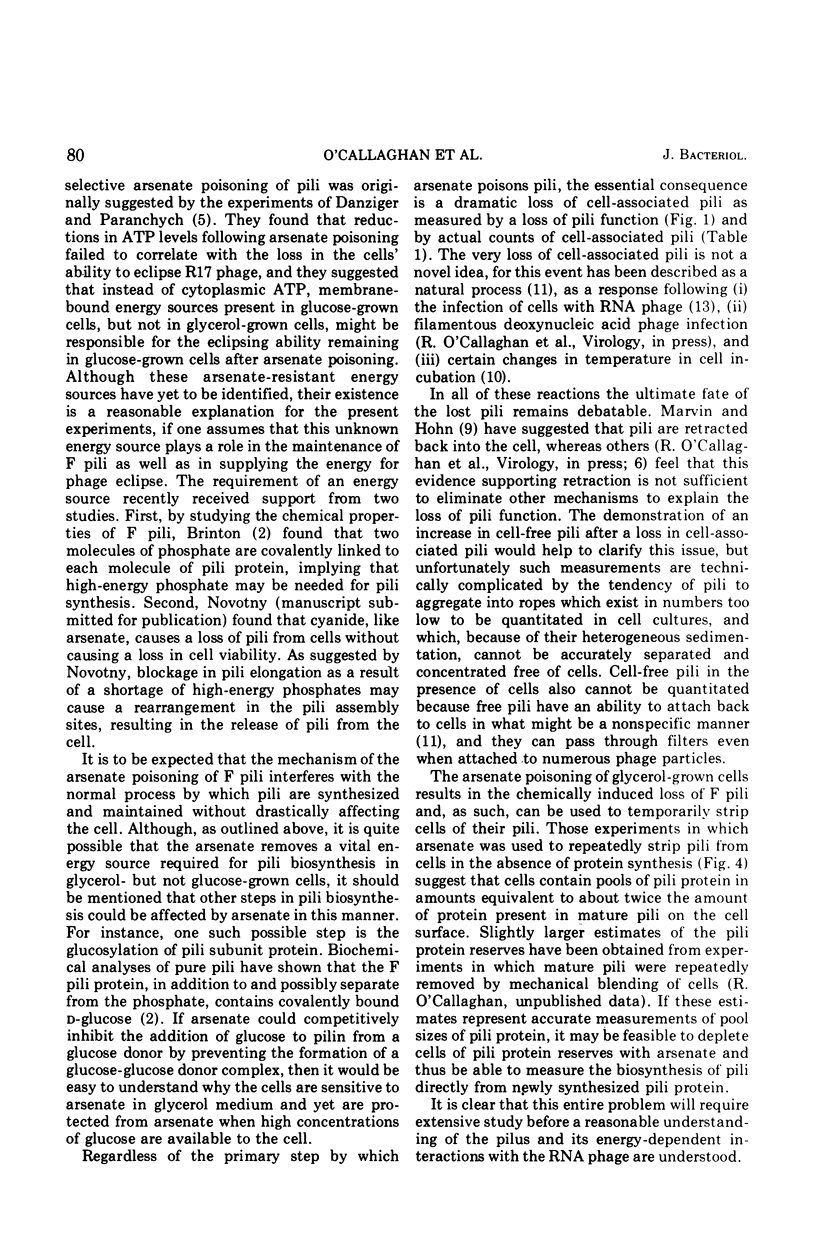
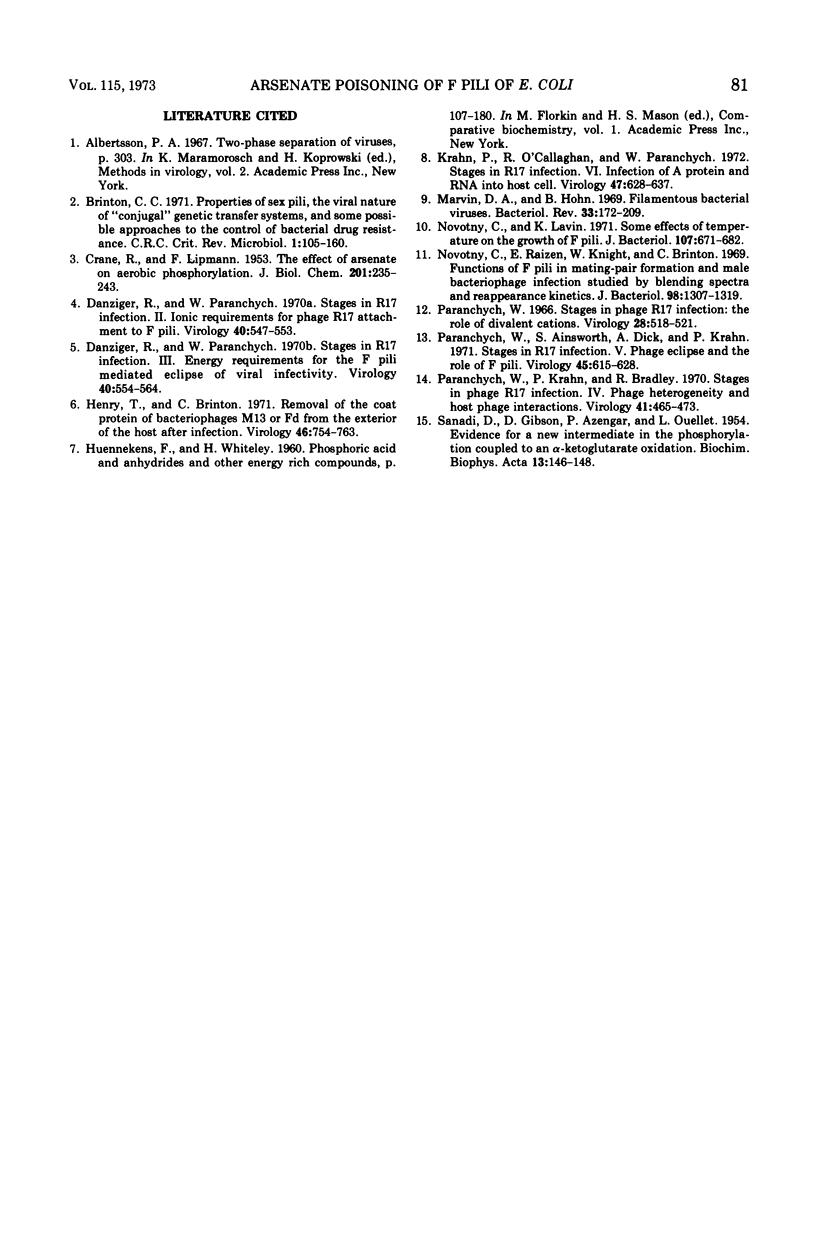
Selected References
These references are in PubMed. This may not be the complete list of references from this article.
- Brinton C. C., Jr The properties of sex pili, the viral nature of "conjugal" genetic transfer systems, and some possible approaches to the control of bacterial drug resistance. CRC Crit Rev Microbiol. 1971 May;1(1):105–160. doi: 10.3109/10408417109104479. [DOI] [PubMed] [Google Scholar]
- CRANE R. K., LIPMANN F. The effect of arsenate on aerobic phosphorylation. J Biol Chem. 1953 Mar;201(1):235–243. [PubMed] [Google Scholar]
- Danziger R. E., Paranchych W. Stages in phage R17 infection. 3. Energy requirements for the F-pili mediated eclipse of viral infectivity. Virology. 1970 Mar;40(3):554–564. doi: 10.1016/0042-6822(70)90199-6. [DOI] [PubMed] [Google Scholar]
- Danziger R. E., Paranchych W. Stages in phage R17 infection. II. Ionic requirements for phage R17 attachment to F-pili. Virology. 1970 Mar;40(3):547–553. doi: 10.1016/0042-6822(70)90198-4. [DOI] [PubMed] [Google Scholar]
- Henry T. J., Brinton C. C., Jr Removal of the coat protein of bacteriophages M13 or fd from the exterior of the host after infection. Virology. 1971 Dec;46(3):754–763. doi: 10.1016/0042-6822(71)90077-8. [DOI] [PubMed] [Google Scholar]
- Krahn P. M., O'Callaghan R. J., Paranchych W. Stages in phage R17 infection. VI. Injection of A protein and RNA into the host cell. Virology. 1972 Mar;47(3):628–637. doi: 10.1016/0042-6822(72)90552-1. [DOI] [PubMed] [Google Scholar]
- Marvin D. A., Hohn B. Filamentous bacterial viruses. Bacteriol Rev. 1969 Jun;33(2):172–209. doi: 10.1128/br.33.2.172-209.1969. [DOI] [PMC free article] [PubMed] [Google Scholar]
- Novotny C. P., Lavin K. Some effects of temperature on the growth of F pili. J Bacteriol. 1971 Sep;107(3):671–682. doi: 10.1128/jb.107.3.671-682.1971. [DOI] [PMC free article] [PubMed] [Google Scholar]
- Novotny C., Raizen E., Knight W. S., Brinton C. C., Jr Functions of F pili in mating-pair formation and male bacteriophage infection studies by blending spectra and reappearance kinetics. J Bacteriol. 1969 Jun;98(3):1307–1319. doi: 10.1128/jb.98.3.1307-1319.1969. [DOI] [PMC free article] [PubMed] [Google Scholar]
- Paranchych W., Ainsworth S. K., Dick A. J., Krahn P. M. Stages in phage R17 infection. V. Phage eclipse and the role of F pili. Virology. 1971 Sep;45(3):615–628. doi: 10.1016/0042-6822(71)90176-0. [DOI] [PubMed] [Google Scholar]
- Paranchych W., Krahn P. M., Bradley R. D. Stages in phage R17 infection. Virology. 1970 Jul;41(3):465–473. doi: 10.1016/0042-6822(70)90168-6. [DOI] [PubMed] [Google Scholar]
- SANADI D. R., GIBSON D. M., AYENGAR P., OUELLET L. Evidence for a new intermediate in the phosphorylation coupled to alpha-ketoglutarate oxidation. Biochim Biophys Acta. 1954 Jan;13(1):146–148. doi: 10.1016/0006-3002(54)90288-7. [DOI] [PubMed] [Google Scholar]


